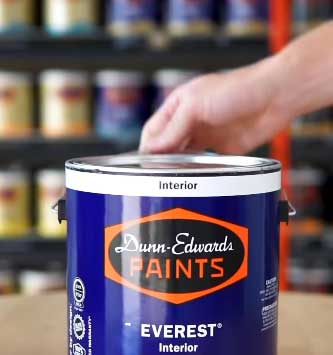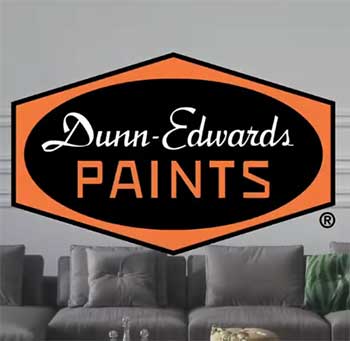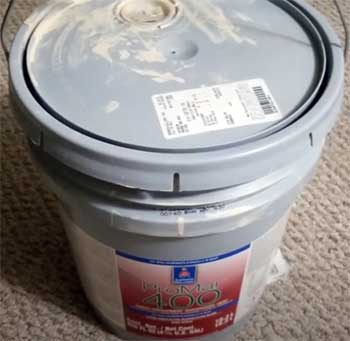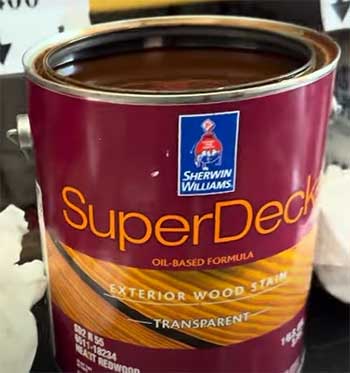I’ve spent countless hours wielding a paintbrush, transforming homes with fresh coats of color. Choosing the right paint brand can make or break a project, and two names always come up in the conversation: Dunn-Edwards and Sherwin-Williams.
In this article, I’ll share my firsthand experience comparing these industry giants, breaking down their pros and cons, key features, and which brand suits different needs.
Whether you’re a homeowner tackling a DIY project or a professional seeking reliable performance, I’ll help you decide which paint delivers the best results for your next masterpiece.
A Brief Comparison Table
| Feature | Dunn-Edwards | Sherwin-Williams |
| Price per Gallon | $30–$45 | $50–$85 |
| Color Selection | 1,200+ colors | 1,700+ colors |
| VOC Levels | Zero-VOC options, stricter compliance | Zero-VOC options, up to 5 g/L |
| Durability | Excellent, slightly less fade-resistant | Superior, advanced polymer formula |
| Ease of Application | Smooth, lightweight, even finish | Thick, may need extra coat |
| Coverage per Gallon | 350–425 sq ft | 350–400 sq ft |
| Availability | Western U.S., online with shipping | Nationwide, Lowe’s, branded stores |
| Warranty | Lifetime (with primer) | Limited lifetime |
| Best Use | Exterior, high-traffic areas | Interior, high durability needs |
| Sustainability | Strong eco-focus, low-odor | Eco-friendly, Harmony line zero-VOC |
The First Hurdle: Where Can You Even Buy It?

Before we can even talk about the chemistry in the can, we have to discuss a simple, unavoidable reality: geography.
Your location might make this decision for you before you even pick up a color swatch.
Sherwin-Williams is the undisputed heavyweight champion of accessibility.
I’ve lived in three different states across the country, and I’ve never been more than a 15-minute drive from one of their signature blue-and-white storefronts.
They are on seemingly every other corner in some towns. This isn’t just a convenience; it’s a strategic advantage. When I ran out of paint midway through a bedroom project at 4 PM on a Saturday, I knew I could zip over and get an exact match of the same batch without a second thought.
Their stores are company-owned, which means the experience, the product availability, and the tinting systems are remarkably consistent whether you’re in Miami, Florida, or Billings, Montana.
For the average American homeowner or a contractor with a national or regional footprint, Sherwin-Williams is simply there.
Dunn-Edwards, on the other hand, is the regional artisan. For decades, they have been the pride of the American Southwest. If you live in California, Arizona, Nevada, New Mexico, or Texas, you’re in luck.
You’ll find their stores are clean, well-run, and staffed by knowledgeable people who often have long careers with the company. There’s a sense of local pride associated with the brand. However, if you live anywhere else, you’re mostly out of luck.
I once worked on a project where a client from Los Angeles insisted on using a specific Dunn-Edwards color. I was in Colorado at the time. The logistical gymnastics required to get that paint shipped were not only expensive but also incredibly stressful.
What if a can was damaged in transit? What if I miscalculated and needed one more gallon? It wasn’t feasible. This geographic limitation is, without a doubt, Dunn-Edwards’ biggest con for a national audience.
While they are slowly expanding, they are decades behind Sherwin-Williams in building a national retail footprint. So, the first question you must answer is: can I even buy Dunn-Edwards paint near me? If the answer is no, Sherwin-Williams wins by default.
Dunn-Edwards: The West Coast Workhorse
Dunn-Edwards, founded in 1925 in Los Angeles, has built a loyal following, especially in the Western U.S. Its paint lines, like Spartashield and Evershield, are designed for versatility, tackling both interior and exterior projects.
I’ve used their Spartawall for interior walls, and it covers 350–425 square feet per gallon, drying in 30–60 minutes. For exteriors, Spartashield handles harsh conditions, applying smoothly even at 35°F.
The brand’s zero-VOC options, like VersaSatin, are nearly odorless, which is a game-changer when painting indoors with clients or kids around.
Pros of Dunn-Edwards

- Affordability: At $30–$45 per gallon, Dunn-Edwards is a budget-friendly choice compared to premium brands. I’ve saved significantly on large projects without sacrificing quality.
- Smooth Application: The lightweight consistency of paints like Suprema makes them a breeze to apply. I’ve rolled on Evershield for exterior stucco and gotten an even finish with minimal effort.
- Eco-Friendly Focus: Dunn-Edwards prioritizes sustainability with low-odor, zero-VOC formulas. Painting a nursery with Versaflat was stress-free, knowing the air stayed clean.
- Weather Resistance: In coastal areas with salty air or Arizona’s scorching heat, Evershield holds up impressively against UV rays and humidity.
- Warranty: Their lifetime warranty (when paired with a primer) gives peace of mind, though I’ve rarely needed it due to the paint’s durability.
Cons of Dunn-Edwards
- Limited Availability: Dunn-Edwards stores are mostly in the Western U.S. When I worked on a project in the Midwest, I had to order online, which added shipping costs and delays.
- Fade Resistance: While durable, Dunn-Edwards paints can fade slightly faster than competitors in high-sun areas. I noticed slight color shifts on a south-facing wall after a few years.
- Color Selection: With 1,200+ colors, the palette is solid but doesn’t match the variety of some competitors. I’ve occasionally struggled to find the perfect shade for picky clients.
- Scrub Resistance: In high-traffic areas, like hallways, Versaflat shows wear under heavy scrubbing, requiring touch-ups sooner than I’d like.
Also Read: Comparison of Sherwin-Williams ProMar 200 And 400 Paints.
Sherwin-Williams: The Contractor’s Choice
Sherwin-Williams, around since 1866, is a household name for a reason. Their SuperPaint line, a favorite of mine, comes in flat, velvet, satin, and semi-gloss sheens, covering 350–400 square feet per gallon. It dries in 30–60 minutes and can be recoated in 2–4 hours.
For exteriors, their Duration and Emerald lines use advanced resin technology, offering superior adhesion and resistance to peeling, blistering, and fading. With over 1,700 colors and industry-leading color-matching tech, I’ve never failed to nail a client’s vision.
Pros of Sherwin-Williams

- Durability: The polymer formula in SuperPaint and Emerald is a beast. I painted a busy family’s living room with SuperPaint, and it still looks pristine after years of kids and pets.
- Nationwide Availability: With stores across the U.S. and availability at Lowe’s, I can grab Sherwin-Williams anywhere. This saved me on a last-minute job in Texas.
- Color Variety: The 1,700+ color options and precise color-matching tech make it easy to replicate any shade. I once matched a client’s vintage wallpaper perfectly.
- Ease of Cleaning: SuperPaint’s washable finish is a lifesaver for high-traffic areas. I’ve scrubbed juice stains off a kitchen wall without losing sheen.
- Professional Support: Sherwin-Williams reps are knowledgeable and often visit job sites to troubleshoot. Their advice helped me fix a tricky adhesion issue on a metal surface.
Cons of Sherwin-Williams
- Pricey: At $50–$85 per gallon, Sherwin-Williams can strain a budget. I’ve winced at the cost for large projects, even with contractor discounts.
- Thicker Consistency: The paint’s thickness, while great for coverage, can clump if you’re not careful. I’ve had to thin it slightly for smoother spraying.
- VOC Levels: While they offer zero-VOC options like Harmony, some lines have up to 5 g/L VOCs, which isn’t ideal for sensitive environments.
- Application Effort: SuperPaint sometimes requires an extra coat for full coverage, especially on darker surfaces, adding time to my jobs.
Head-to-Head Comparison of Dunn-Edwards And Sherwin-Williams Paints
- Durability and Longevity

Both brands excel in durability, but Sherwin-Williams edges out slightly.
Its special polymer formula resists staining, fading, and damage better than Dunn-Edwards.
I painted a client’s exterior with Sherwin-Williams Duration, and a decade later, it still looks vibrant despite harsh winters.
Dunn-Edwards Evershield is no slouch, though. I used it on a coastal home, and it withstood salty air and UV rays for years, though I noticed minor fading on sun-exposed areas.
- Ease of Application
Dunn-Edwards paints, like Suprema, are lightweight and spread like a dream, giving me smooth, streak-free finishes with minimal effort. Sherwin-Williams, while reliable, can be trickier due to its thicker consistency.
I’ve found SuperPaint sticks well to rollers but occasionally requires extra care to avoid clumping, especially when spraying. For quick jobs, Dunn-Edwards often saves me time.
- Cost and Value
Cost is where Dunn-Edwards shines. At roughly half the price of Sherwin-Williams, it’s a go-to for budget-conscious projects. I painted a rental property with Dunn-Edwards Versaflat, and the results rivaled pricier brands.
Sherwin-Williams, while expensive, justifies its cost with unmatched durability and coverage, especially for high-end or commercial jobs where longevity matters.
- Color Selection and Matching
Sherwin-Williams takes the crown here. With 1,700+ colors and cutting-edge color-matching tech, I’ve recreated everything from a client’s heirloom fabric to a competitor’s shade.
Dunn-Edwards’ 1,200+ colors are impressive, but I’ve occasionally hit limits with niche shades. Their color-matching is solid but not as precise as Sherwin-Williams.
- Sustainability and VOCs
Dunn-Edwards leads in eco-friendliness. Their zero-VOC formulas, like VersaSatin, have no added VOCs and minimal odor, making them ideal for indoor projects.
Sherwin-Williams offers zero-VOC options, but some lines have up to 5 g/L VOCs, which can be a concern in poorly ventilated spaces. I’ve used Dunn-Edwards in homes with newborns and appreciated the lack of fumes.
- Availability and Accessibility
Sherwin-Williams’ nationwide presence makes it a no-brainer for projects anywhere in the U.S. I can walk into a store or Lowe’s and grab what I need. Dunn-Edwards, primarily available in the West, can be a hassle to source elsewhere.
Ordering online works, but shipping costs add up, and delays can throw off tight schedules.
- Warranty and Support
Both brands offer solid warranties, but Dunn-Edwards requires a primer for its lifetime warranty, which can add steps to a project. Sherwin-Williams’ limited lifetime warranty is more flexible, covering DIY and professional applications.
I’ve found Sherwin-Williams’ customer support more responsive, with reps offering on-site help, while Dunn-Edwards’ support is reliable but less hands-on.
Also Read: Comparison of ProMar 200 And SuperPaint Paints.
Where Each Brand Shines?
- Interior Painting
For interior projects, Sherwin-Williams is my top pick. Its SuperPaint and Emerald lines are perfect for high-traffic areas like kitchens and hallways. I painted a client’s dining room with SuperPaint in a satin finish, and it’s held up to countless dinner parties without a scratch.
Dunn-Edwards VersaSatin is a strong contender for budget-friendly interior jobs, especially in low-traffic areas like bedrooms, where its smooth finish and low odor shine.
- Exterior Painting

Dunn-Edwards takes the lead for exteriors, especially in harsh climates.
I used Evershield on a stucco home in Arizona, and it handled 115°F days like a champ.
Sherwin-Williams Duration is excellent for exteriors too, but its higher cost makes it less practical for large surfaces unless the client prioritizes longevity over budget.
- High-Traffic Areas
Sherwin-Williams’ washable finishes make it ideal for high-traffic zones. I painted a school hallway with SuperPaint, and it’s endured years of backpacks and fingerprints. Dunn-Edwards Suprema holds up well but may need touch-ups sooner under heavy wear.
- Specialty Projects
For eco-conscious or sensitive projects, Dunn-Edwards’ zero-VOC paints are my go-to. I used Versaflat in a hospital waiting room, and the lack of odor was a huge plus. Sherwin-Williams’ Harmony line works similarly but is pricier, so I lean toward Dunn-Edwards for these jobs.
Choosing The Right Paint For You
After years of painting with both brands, I’ve learned that the choice depends on your priorities. If you’re on a budget or working in a tough climate, Dunn-Edwards delivers quality at a lower price.
Its lightweight application and eco-friendly options make it a favorite for DIYers and pros in the West. Sherwin-Williams, with its superior durability and vast color range, is worth the splurge for high-end projects or when you need a paint that lasts decades.
I’ve mixed and matched both brands on jobs, using Dunn-Edwards for cost-effective base coats and Sherwin-Williams for durable topcoats.
Tips For Getting The Best Results
No matter which brand you choose, preparation is key. I always clean surfaces thoroughly, sand rough spots, and use a high-quality primer (like Dunn-Edwards Ultra-Grip or Sherwin-Williams ProBlock) for better adhesion.
Test colors on a small area first—lighting can change how shades look. For Dunn-Edwards, stick to two coats for full coverage, especially with lighter colors. With Sherwin-Williams, thin the paint slightly for spraying to avoid clogs. And don’t skip the roller back-roll after spraying—it ensures an even finish.
Also Read: Comparison of Sherwin-Williams ProMar 200 And Emerald Paints.
Frequently Asked Questions (FAQ)
Yes, Dunn-Edwards is a high-quality paint, offering excellent coverage, durability, and eco-friendly options, especially for residential and exterior projects.
Sherwin-Williams often takes the top spot for its durability, color variety, and professional-grade performance, though Benjamin Moore is a close rival.
Painters love Sherwin-Williams for its durability, ease of application, vast color selection, and reliable customer support, making it ideal for professional jobs.
Dunn-Edwards is more affordable and eco-friendly, but Benjamin Moore often edges out in color depth and premium finishes. It depends on your project needs.
Conclusion: Your Path To A Perfect Paint Job
You’ve got a vision for your space, and choosing between Dunn-Edwards and Sherwin-Williams is a big step toward making it reality. I’ve shared my experiences to help you weigh their strengths—Dunn-Edwards’ affordability and weather resistance versus Sherwin-Williams’ unmatched durability and color options.
Whether you’re refreshing a bedroom or tackling an exterior overhaul, consider your budget, environment, and project goals. Both brands can deliver stunning results, so pick the one that aligns with your needs and get ready to transform your space with confidence.
